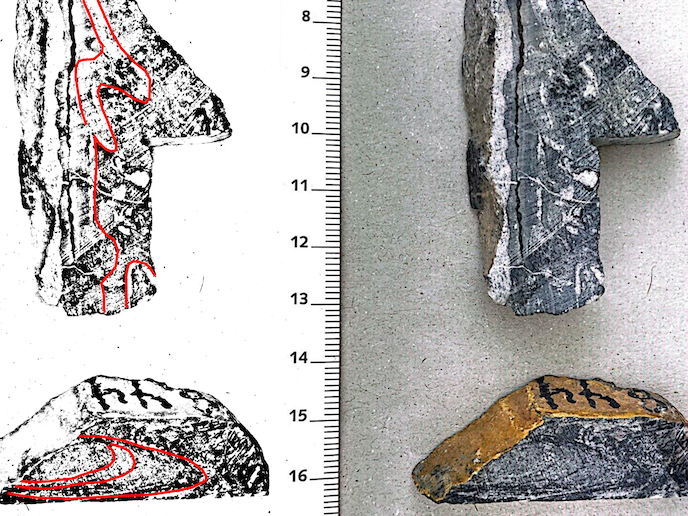What can the study of early Earth tell us about Mars?
Although the origin of life remains unresolved, hydrothermal vents and acidic environments have traditionally been proposed as potential locations in which life could have evolved. But phosphorus, a fundamental component for life, is not readily available for biological processes in such environments, as it is trapped in calcium-rich mineral forms. This intriguing conundrum is known as ‘the phosphate problem’. Carbonate lakes might provide a solution: “In these settings, calcium is locked up in carbonate minerals, freeing up phosphorus and making it more accessible for prebiotic chemistry,” explains Fuencisla Cañadas Blasco who conducted her research with the support of the Marie Skłodowska-Curie Actions programme. On Earth, many carbonate environments are formed as a consequence of photosynthesis, which increases alkalinity leading to the precipitation of carbonate rocks. While carbonates are abundant on Earth, and present throughout all geological periods, they are scarce on Mars. Such rocks have only been detected in a few locations, primarily through satellite observations. “The Perseverance rover from the Mars 2020 mission has recently detected and collected carbonate samples in situ for the first time, corroborating previous satellite observations. Which then begs the question: Were carbonates on Mars associated with life?” asks Cañadas.
Bioavailable phosphorus in 2.9 billion-year-old carbonate rocks
A better understanding of the terrestrial geochemical process at work can feed into our analysis of Mars samples. Cañadas collected samples deposited 2.9 billion years ago, in both shallow and deeper waters. These are found in Canada, the location of the oldest carbonate platform on Earth. The rocks are well preserved and contain one of the most diverse suites of sedimentary structures formed by cyanobacteria, known as stromatolites. “I visited several rocky outcrops, but the collection was made from rock cores donated by mining companies. The benefit of working with rock cores is that samples are not exposed to air or water, and thus chemical or physical alteration is reduced. This facilitates the preservation of their original geochemical signatures,” notes Cañadas. Samples in hand, she then worked in France and the United Kingdom, combining different geochemical techniques to quantify the amount of bioavailable phosphorus.
Early life in a period characterised by anoxic iron-rich oceans
Through the geochemical analyses performed, the MaPLE project, hosted by the Spanish National Research Council at the Centre for Astrobiology, has reconstructed the phosphorus cycling on early Earth and its link with oxygen production and early life. “By doing so, we identified the biogeochemical process that favoured the emergence and diversification of simple life forms in a geological period characterised by anoxic iron-rich oceans and a CO2-rich atmosphere,” notes Cañadas. The project provided answers about the processes that led to one of the earliest intervals of oxygenated surface waters on Earth. As Cañadas adds: “We have described the functioning of the phosphorus cycle nearly 3 billion years ago, understanding how geochemical processes in deep waters allowed the emergence of life and the formation of carbonates in shallow waters.” This, she explains, required meticulous and exhaustive checks to ensure that the measured data accurately reflected the original geochemical signatures from 2.9 billion years ago, rather than modifications that occurred over time.
Using data from terrestrial research to understand Mars
Currently, Mars is a cold, dry planet, but 3-4 billion years ago, when life emerged on Earth, Mars had water and similar habitability conditions as Earth. In those conditions life emerged and thrived on Earth. The question remains: Did life also arise on Mars? “Deltaic environments are particularly favourable for preserving potential biosignatures, as the sedimentary processes that formed the delta could trap and protect organic matter and other signs of life within the geologic record,” says Cañadas. The Mars 2020 mission is looking for traces of ancient life in the Jezero crater. The crater features a well-preserved delta, providing clear evidence that it was once filled by a large lake. The data from the Mars 2020 mission is released three times a year by the Planetary Data System and is freely accessible. The specific data required for the MaPLE project was acquired at the very end of the project. Despite this timing, the results will still be evaluated. “I am aiming to analyse the data collected in the carbonate area of the Jezero crater and hope to be among the fortunate researchers who will study those carbonate rocks once they get back from Mars through the Mars Sample Return Mission,” explains Cañadas. The next step is to understand why carbonates are so scarce on Mars. Could those carbonates be related to life? “In Canada, carbonates containing evidence of ancient life are located in areas which would have had shallow waters. In Jezero, carbonates appear in a rim, also in shallow areas. Were they formed and influenced by simple life? Or are they just formed by non-life-mediating, abiotic processes? If abiotic, why is the location so restricted?”
Keywords
MaPLE, EU, bioavailable phosphorus, 2.9-billion-year-old, carbonate rocks, anoxic iron-rich oceans, origin of life, Mars, Jezero crater, stromatolites, phosphorus cycle



